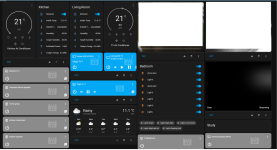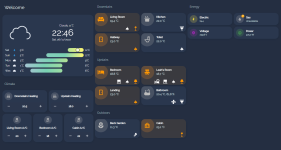Any thoughts how I go about setting up an automation that turns a switch on at 7:30 - 16:00 Mon-Fri for two weeks then on the third week switch on at 10:00-18:00 for a full week?
Ooh that's an interestingly weird one! Bound to be lots of ways depending on exactly why you need it - you could set out your year's calendar and run that way.
If it was truly predictable (ie always this way), then I'd probably think about setting up two very simple helper values that are:
- just a 0 or a 1
- then another as a countdown for the two weeks or one week
Then you can have an automation that says 'if helper = 0' (ie we're in the 14 day cycle), then set the countdown to 14 days and once it equals 0, then add 1 to the week cycle helper and set it to 7. This would effectively give you the cycle.
Then you could just set up your two automation patterns one called 'weekly cycle' and one called 'fortnight cycle' or whatever and call these at a relevant point in above (or you could use the scheduler card which is really nice) https://community.home-assistant.io/t/scheduler-card-custom-component/217458
Does this make sense? Bound to be a more eloquent way, just trying to stick to simple WYSIWYG components for beginners!
Tutorial on helpers here:

Using Helpers in Home Assistant
In my journey to build a smarter home, I am always thinking about how to improve the user experience especially when so much of what my house does is without...













